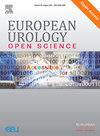Prognostic Factors for Pregnancy and Patency Rates After Microsurgery for Obstruction of the Upper Seminal Tract: A Retrospective Single-surgeon Series of 336 Cases
IF 3.2
3区 医学
Q1 UROLOGY & NEPHROLOGY
引用次数: 0
Abstract
Background and objective
To achieve optimal results in treating vasal obstruction, microsurgery is the standard of care. However, not all vasovasostomy (VV) or vasoepididymostomy (VE) procedures lead to subsequent pregnancy. Identification of parameters that can predict success in restoring fertility is clinically relevant. We evaluated various parameters in relation to patency and pregnancy outcomes in a retrospective single-surgeon series.
Methods
We analysed data for 336 men with azoospermia due to vasal obstruction who underwent microsurgery to restore fertility. Seminal fluid was harvested intraoperatively from the testicular stump for analysis of gross quality. Intraoperative parameters, time to conception, patency rate, age of the female partner, and time from vasectomy to reconstruction were assessed in relation to pregnancy outcomes. Multivariable logistic regression was performed to identify independent prognostic parameters.
Key findings and limitations
The median age at surgery was 42 (range 27–70) yr for the men and 33 (range 19–46) yr for their female partners. The overall patency rate after surgery was 86.8% (236/272). Secondary obstruction occurred in 14/272 men (5.1%). Pregnancy was achieved in 127/258 couples (49.2%). The most significant predictor of successful treatment was the obstruction time (p < 0.01), with significantly lower success rates for longer times since vasectomy. None of the intraoperative parameters we analysed was associated with subsequent pregnancy. The primary limitation of our study is its retrospective design.
Conclusions and clinical implications
Patency and pregnancy rates in our series are similar to rates reported in the literature. Pregnancy success after vasectomy reversal mainly depends on the time since vasectomy. Additional biomarkers are needed to predict postoperative pregnancy outcomes.
Patient summary
In our study, nearly 87% of men were fertile again after surgery to reverse a vasectomy, and about half of the couples were then able to get pregnant. The key factor for success was the time since vasectomy, with better results for shorter times. More research is needed to find reliable ways to predict if a couple will get pregnant after this surgery.
显微手术治疗上精道梗阻后妊娠及通畅率的预后因素:336例单外科医生回顾性分析
背景与目的为了达到治疗血管梗阻的最佳效果,显微手术是治疗的标准方法。然而,并不是所有的输精管造口术(VV)或输精管附睾造口术(VE)都会导致妊娠。确定可以预测恢复生育能力成功的参数具有临床意义。我们在一个回顾性的单外科医生系列中评估了与通畅和妊娠结局有关的各种参数。方法对336例血管梗阻性无精子症患者行显微手术恢复生育的资料进行分析。术中从睾丸残端收集精液进行质量分析。评估术中参数、受孕时间、通畅率、女性伴侣年龄以及从输精管结扎到重建的时间与妊娠结局的关系。采用多变量逻辑回归来确定独立的预后参数。主要发现和局限性男性手术时的中位年龄为42岁(27-70岁),女性手术时的中位年龄为33岁(19-46岁)。术后总通畅率为86.8%(236/272)。继发性梗阻发生率为14/272(5.1%)。127/258对夫妇(49.2%)成功怀孕。治疗成功的最重要预测因子是梗阻时间(p <;0.01),输精管结扎后较长时间的成功率明显较低。我们分析的术中参数均与随后的妊娠无关。本研究的主要局限性在于其回顾性设计。结论和临床意义本研究的通畅率和妊娠率与文献报道的相似。输精管结扎逆转后妊娠成功与否主要取决于输精管结扎后的时间。需要更多的生物标志物来预测术后妊娠结局。在我们的研究中,近87%的男性在输精管结扎手术后恢复了生育能力,大约一半的夫妇随后能够怀孕。成功的关键因素是输精管结扎后的时间,时间越短效果越好。需要更多的研究来找到可靠的方法来预测一对夫妇在手术后是否会怀孕。
本文章由计算机程序翻译,如有差异,请以英文原文为准。
求助全文
约1分钟内获得全文
求助全文
来源期刊

European Urology Open Science
UROLOGY & NEPHROLOGY-
CiteScore
3.40
自引率
4.00%
发文量
1183
审稿时长
49 days
 求助内容:
求助内容: 应助结果提醒方式:
应助结果提醒方式:


